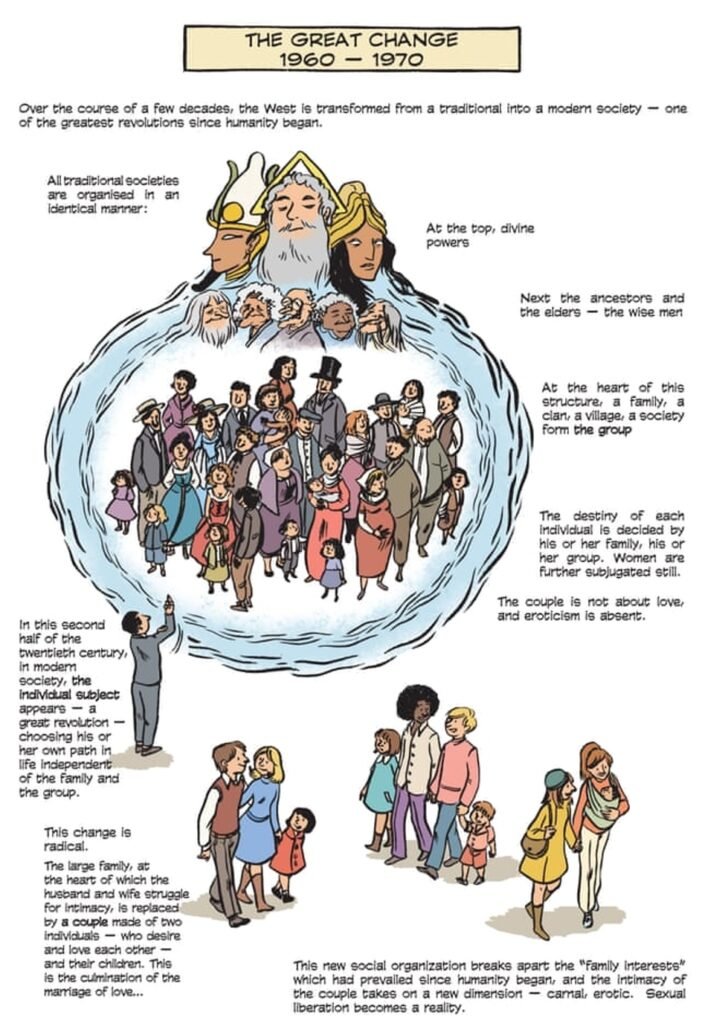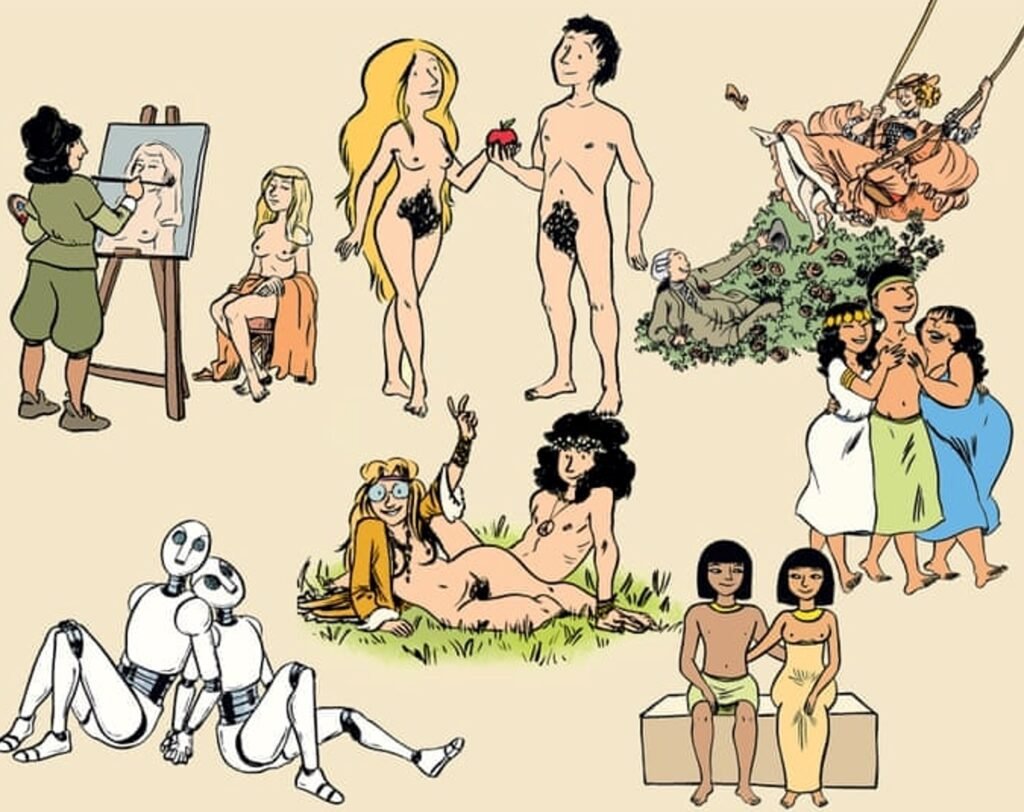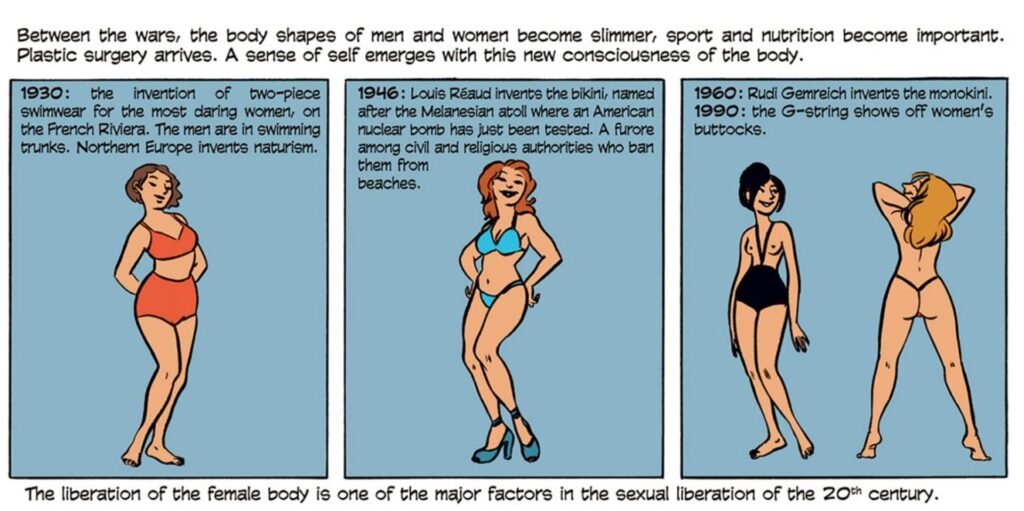Writer : Philippe Brenot
Artist : Laetitia Coryn
Year : 2016
Publisher : Penguin (English edition – translated by Will McMorran)
Sex sells, so we are told. The reason behind this might be more obvious than may at first appear: it is not that sex per se is an interesting subject, rather the fact that we tend to talk (at least properly) so little about it that the vast spaces of curiosity regarding this subject beg to be filled by as much knowledge as we could get.
Sex sells, then, because there is certain hunger for knowledge and because sex, as it is, is more varied than we might think, ranging from the very chaste missionary position to something that begs the question as to whether it is morally acceptable.
Sex is a driving force, not just because it gives life to our descendants (without sex we wouldn’t exist, which is so obvious a statements it becomes a truism), but also because it is basically one of the main elements that are at the basis of human society, ending up both regulating our society and needing to be regulated (once again, by our society).

It’s a duality of passive and active forces that, when mixed together, can lead to fruitful results (the acceptance of homosexuality) or to a dictatorial attitude (women need to cover their hair before entering a church, as our catholic grandmothers might recall).
Writing and drawing a history of sex, then, could be a way of satisfying our need for knowledge. The more we know, indeed, the freer we are, or at least the more powerful we become, as by having a firm grasp on the mechanisms of any given element would theoretically teach us how to better use (or change) it. Yet, whenever we are faced with a book that in its title boasts a universal character (the story of sex is the story of all sex, both in time and space), it is always a good thing to wonder if such boasting is well-deserved or if it’s simply a way of selling more copies.
Unfortunately, The Story of Sex is not the definitive story of sex at all, although the experience of reading the book is overall satisfactory, too many are the problems that plague this book that tries to get rid of the word “novel” and present us an instance of a “graphic essay”.
The writer, Phillipe Brenot, does not give the readers a comprehensive look at sex through human history; in fact, what we are given is the story of sex in the Western world, although even such a definition would be wrong. Starting from our first stages as hominids, the author moves towards the Middle East and quickly turns to the left (on the world map, that is) to meet the Greeks, the Romans, and the Europeans. Yet, the word “Europeans” is not at all correct here, as the main focus of the study from the Middle Ages to our present days is mainly (if not, sometimes, totally) France. There is no mention at all of how sex was perceived in China, or in the Amerindian empires, or in Africa, or even in the Arab worlds. If a reader were asked what the Australian aborigines thought and think about the act of copulation, the only answer would be the fully formed sentence “I have absolutely no idea whatsoever”. Not a good sign for a book that is titled The Story of Sex.

There should also be a certain reticence in reading the book and giving it credit for what it says. Academic essays are supposed to be supported by citations over citations, by making sure that the truths that are being presented as such are actually founded on an unmistakable veracity; here, what we are given is simply words over words (and beautiful panel after beautiful panel) whose truthfulness is based on our simply trusting Mr Brenot.
As an essay of this kind, then, the book is academically inadequate; the first pages, where we are told how our apish progenitors lived, are presented as a fact, which begs the question “Did Brenot actually see it happening before his eyes?”, and leads us to thinking that if you start a book by positing a feeble hypothesis as an actual occurrence we are less inclined to trust you in regard to what is coming next.
This does not mean that the hypothesis is wrong, rather that science cannot be based on assumptions that are turned into reality just because they suit the story we are telling. A simple “based on what we know men and women probably…” would have sufficed, thus making historians roll their eyes a bit less.
Yet, the problems we encounter while reading do not detract from the overall experience of being given a taste of what the study of sex entails. It should then be asked what the goal of the project is; probably, the book is not intended for adults who hopefully know how to look for academic and scholarly essays regarding the subject, but for young adults ranging from 12 to 18, people who need to know about sex in a way that is digestible to their minds.

There is little denying, then, that the book opens itself up to becoming a good means to introduce the topic in a non-judgemental way, and the panels (even those depicting sexual organs and sex acts) are rendered in a way that only the most prudish would find indecent (but, when thinking about it thoroughly, no such person would buy this book). The final pages veer off into too much imagination and could easily be got rid of without the book’s losing its strengths, and too little time is dedicated to the problem of sexually transmitted diseases.
Not the greatest book on sex (penis size is not even touched upon, nor the different shapes of vaginas), neither a comprehensive work (historically lacking, too geographically narrow), yet an amusing read, if taken as a solid introduction to the topic, that maybe makes more sense if read in French (and in France) than by an international audience.

